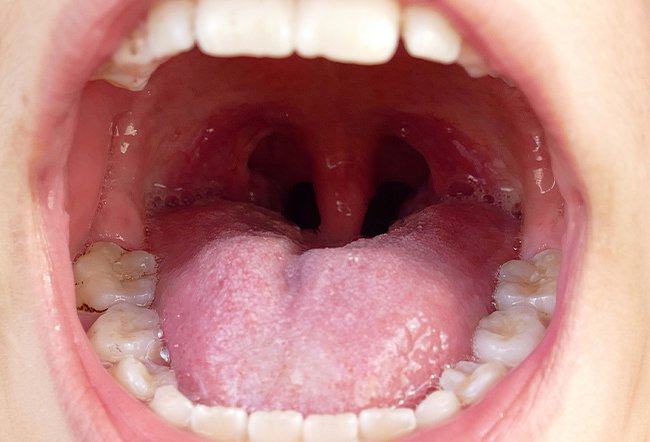What Are the Different Parts of the Roof of Mouth?

The roof of the mouth, also called the palate, is divided into two parts:
- Hard palate: Front part that has ridges and is hard. It is made of bone.
- Soft palate: Back part that is relatively smooth and soft. It is made up of tissues.
Both hard and soft palates help in producing speech by separating the mouth from the nasal cavity, allowing air to pass through separate passages.
5 common oral diseases
Poor oral hygiene can cause mouth problems, such as bad breath, gum disease, cavities, tooth abscesses, and tooth loss. Brushing with fluoride toothpaste, flossing daily, and visiting the dentist regularly are crucial for good oral health
According to the American Dental Association, many systemic diseases can affect the mouth, and certain life-threatening diseases have been linked to poor oral health. Some of the most common oral health issues include:
- Tooth decay: Tooth decay affects people of all ages but is preventable. Cavities develop when bacteria enters the teeth, causing enamel wear and tear and necessitating medical or dental intervention.
- Birth defects, such as cleft lip: Cleft lip and cleft palate are common birth defects characterized by openings or splits in the upper lip, roof of the mouth, or both. They occur when facial structures in an unborn baby do not close completely. Surgery is often recommended to treat the condition.
- Periodontal (gum) disease: Gum disease is caused by a buildup of bacteria on the teeth and beneath the gum line, which can lead to inflammation and infection. It is more likely to develop in people who have a chronic health condition, such as heart disease, diabetes, or arthritis. In most cases, the dentist will perform a thorough cleaning and may prescribe antibiotics to help fight the infection.
- Oral and throat cancer: This type of cancer is mostly found in patients who have poor oral habits, such as smoking tobacco. The CDC recently reported that the 5-year survival rate is about 61%, although early detection and intervention can lead to more promising results.
- Mouth injury or trauma: Mouth injury can be caused by hazardous conditions, risk-taking behavior, accidents, or violence. Sports injuries are the primary cause of many cases of mouth trauma.
What are symptoms of oral cancer?
Oral cancer is one of the most dangerous oral health diseases, despite being the least common. Oral cancer can affect the tongue, tonsils, gums, and oropharynx (section of the throat at the back of the mouth). Signs and symptoms include:
- White or red patches on the gums, tonsils or other areas inside the mouth
- A lip or mouth sore that does not heal for a long while
- A lump inside the mouth
- Mouth pain
- Problems swallowing
- Constant bad breath
- Weight loss
Oral cancer is curable. The key to beat the disease is to avoid high-risk behaviors, such as smoking tobacco and drinking too much alcohol.
Early signs of oral cancer can be detected by a dentist before it becomes difficult to treat. Treatment may include a combination of surgery, radiation, and chemotherapy, depending on the type of oral cancer and the stage of the cancer at the time of diagnosis.
What is cleft palate repair?
Cleft palate repair involves joining the cleft sides. If done when the patient is very young, surgery greatly improves the chances of developing normal speech, facial structure, and tooth alignment.
Cleft palate surgery is typically performed before the age of 18 months, but it can be performed on children as young as 6 months old. A second surgery to repair the hard palate may be performed before the infant is 18 months old. Based on the specifics of the child's condition, the oral maxillofacial surgeon may determine the best course of action.
- Cleft palate repair surgery is performed in an operating room while the infant is sedated. The surgeon makes incisions on both sides of the cleft and then rotates and brings the muscles and tissues together to close the cleft.
- Then, self-dissolving stitches are used to close the cleft. If the child's breathing is obstructed, the surgeon may place a stitch with a long thread on the tongue, which can be used to pull the tongue forward.
Cleft lips and palates are not always avoidable. However, folic acid deficiency during pregnancy can lead to cleft palates. Therefore, expecting mothers are urged to take folic acid supplements (400 mcg a day).
